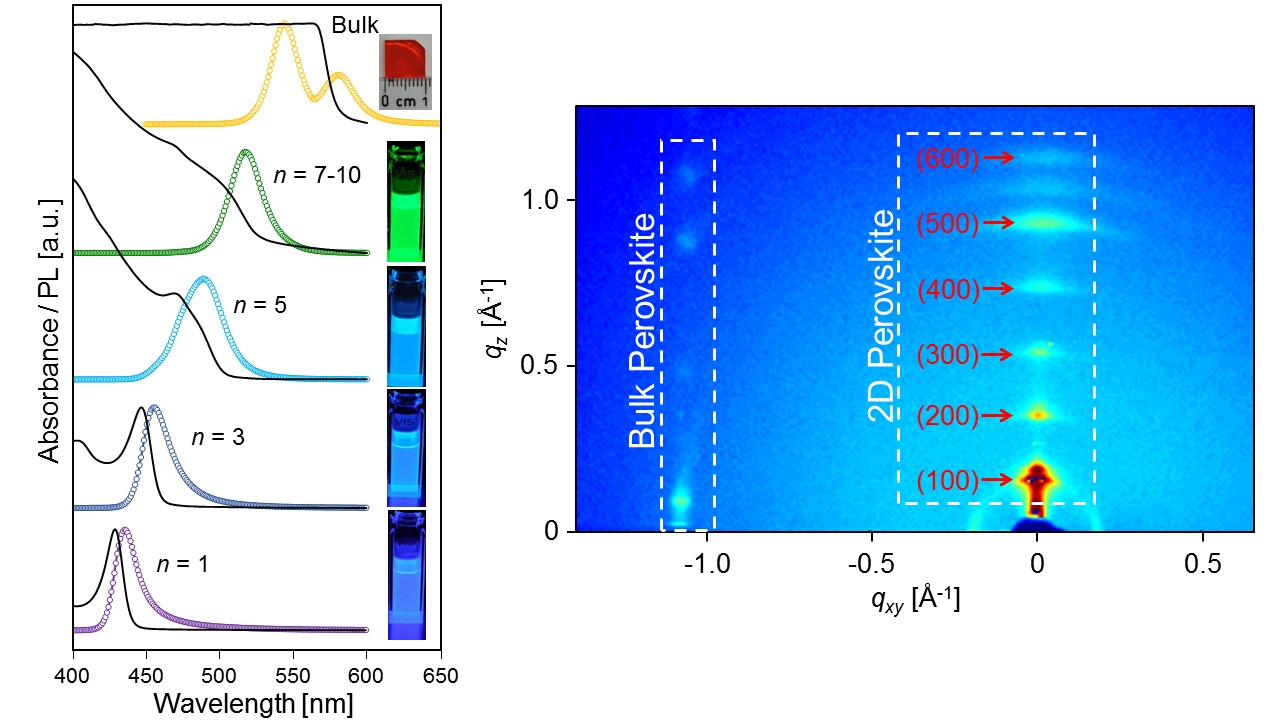Colloidal quantum-confined perovskites for ultrapure green optoelectronics: synthesis and applications
Hybrid lead halide perovskites, described by a formula ABX3, recently emerged as a new class of semiconducting materials for various optoelectronic devices.[1] In particular, in form of colloidal nanocrystals they exhibit properties like high photoluminescence quantum yield (PLQY), tunable bandgap, defect tolerance, efficient carrier recombination, outstanding color purity (FWHM less than 25 nm) or low cost of production, which are all a prerequisite for a material used in fabrication of efficient, solution-processed light-emitting diodes (LEDs).[2] Analogously to conventional, inorganic quantum dots (QDs), quantum confinement effects could be observed upon forming colloidal perovskite nanoplatelets (NPLs) with thicknesses below ~10 unit cells.[3] In our work, on the example of MAPbBr3 we demonstrate how the number of layers comprising the nanoplatelet can be precisely controlled.[4] As a consequence not only is the emission wavelength varied without altering the chemical composition, but also an increase in exciton binding energy within these structures can be observed, which is crucial for efficient radiative carrier recombination within these structures.

Furthermore, it can be proven that high PLQY values obtained in solution (50-90%) are also retained after depositing the colloidal dispersions on solid substrates, a phenomenon that could not be achieved till now and clearly distinguishes perovskite NPLs from inorganic QDs.[5] With the aid of computational methods we indicate the changes in the crystal lattice depending on the NPL surrounding, which are responsible for such great performance of perovskite NPLs in solid form. In order to exploit the exceptionally high PLQY in solid films, both active matrix, as well as passive (down-converted) green LEDs using quantum confined perovskites are prepared. The former exhibits maximum power efficacy of 7.7 lm/W – one of the highest values achieved among colloidal perovskite nanocrystals-based active matrix LEDs. On the other hand, the latter can reach values exceeding the performance of commercial monochromatic InGaN devices. This opens an avenue towards low-cost and high-throughput production of solution-processed light-emitting devices.
[1] P. Docampo, T. Bein, Accounts of Chemical Research, 2016, 49, 339.
[2] B. R. Sutherland, E. H. Sargent, Nature Photonics, 2016, 10, 295.
[3] J. A. Sichert et al., Nano Letters, 2015, 15, 6521.
[4] S. Kumar, J. Jagielski et al., ACS Nano, 2016, 10, 9720.
[5] B. G. Jeong et al., ACS Nano, 2016, 10, 9297.